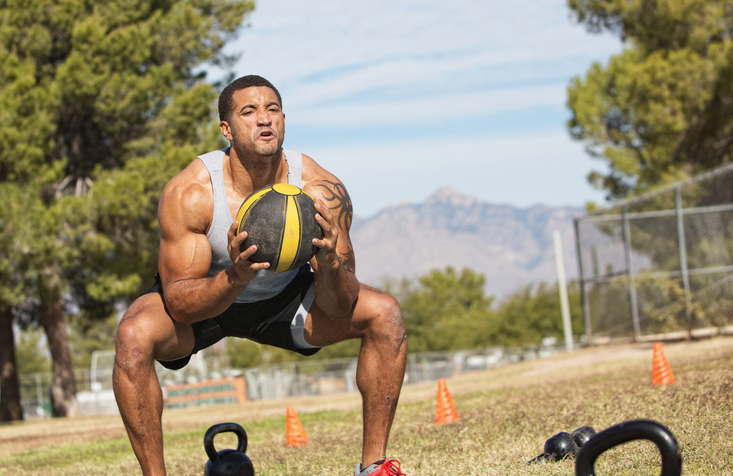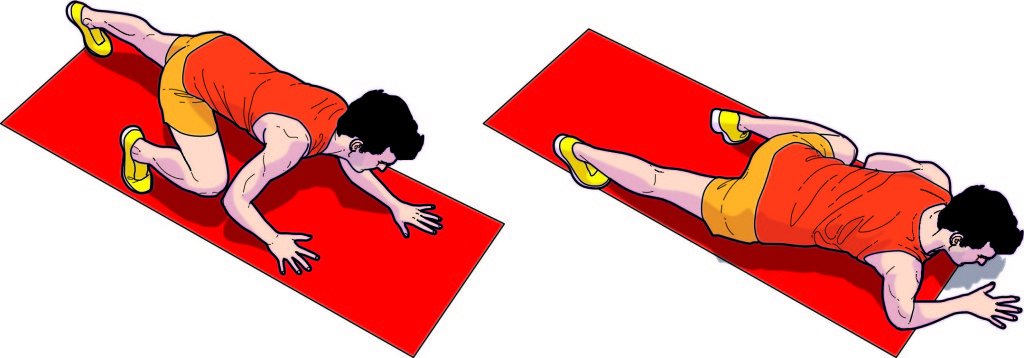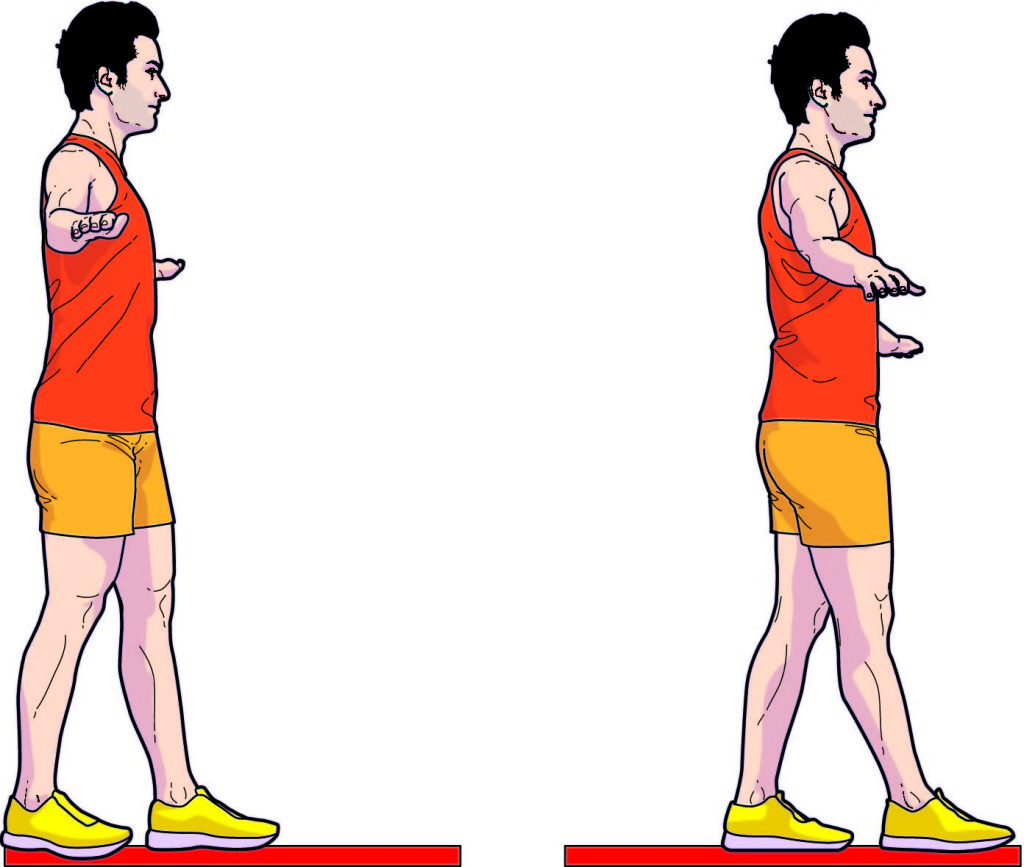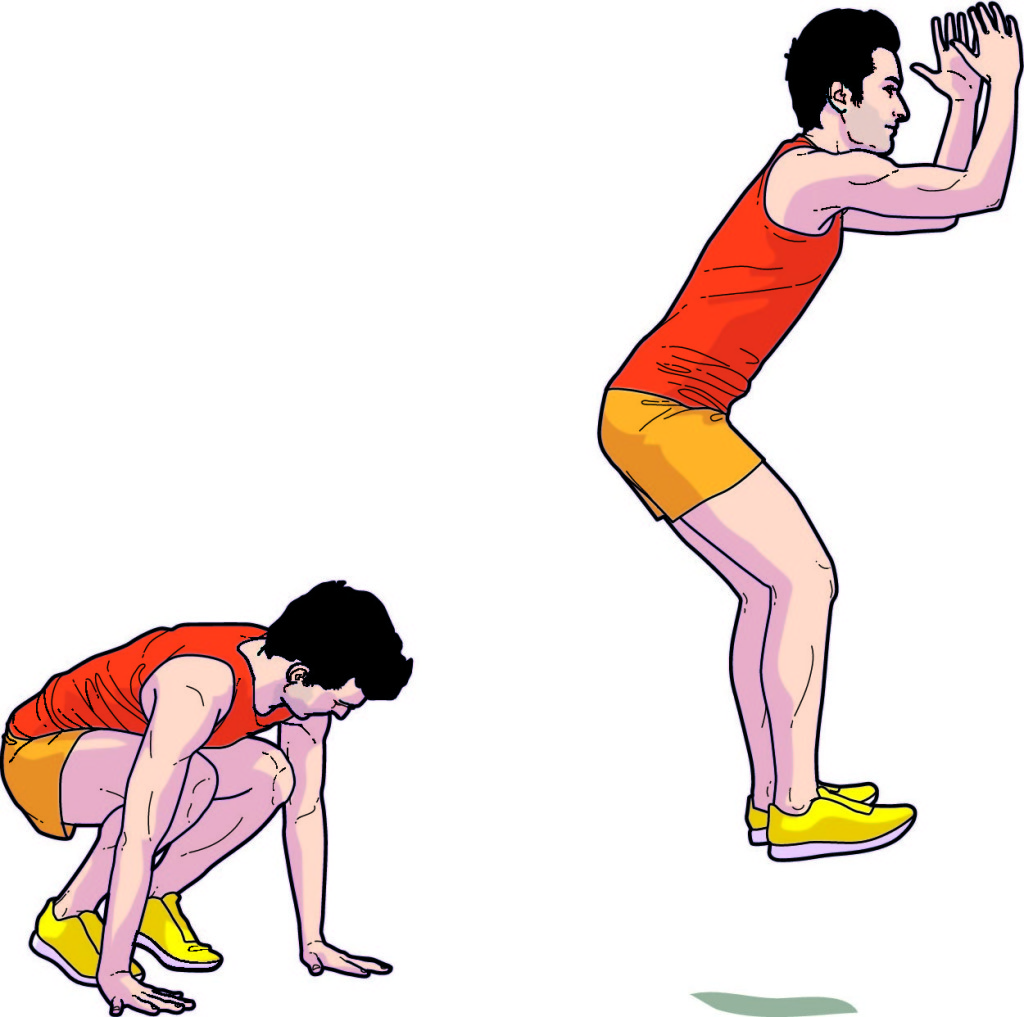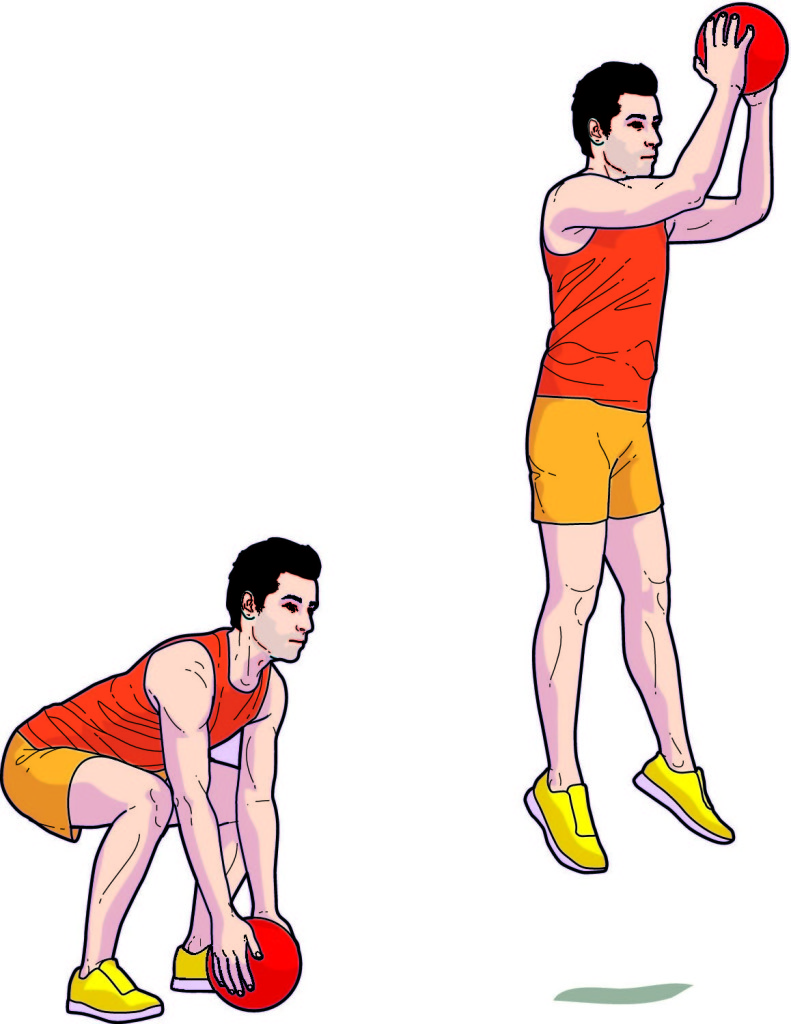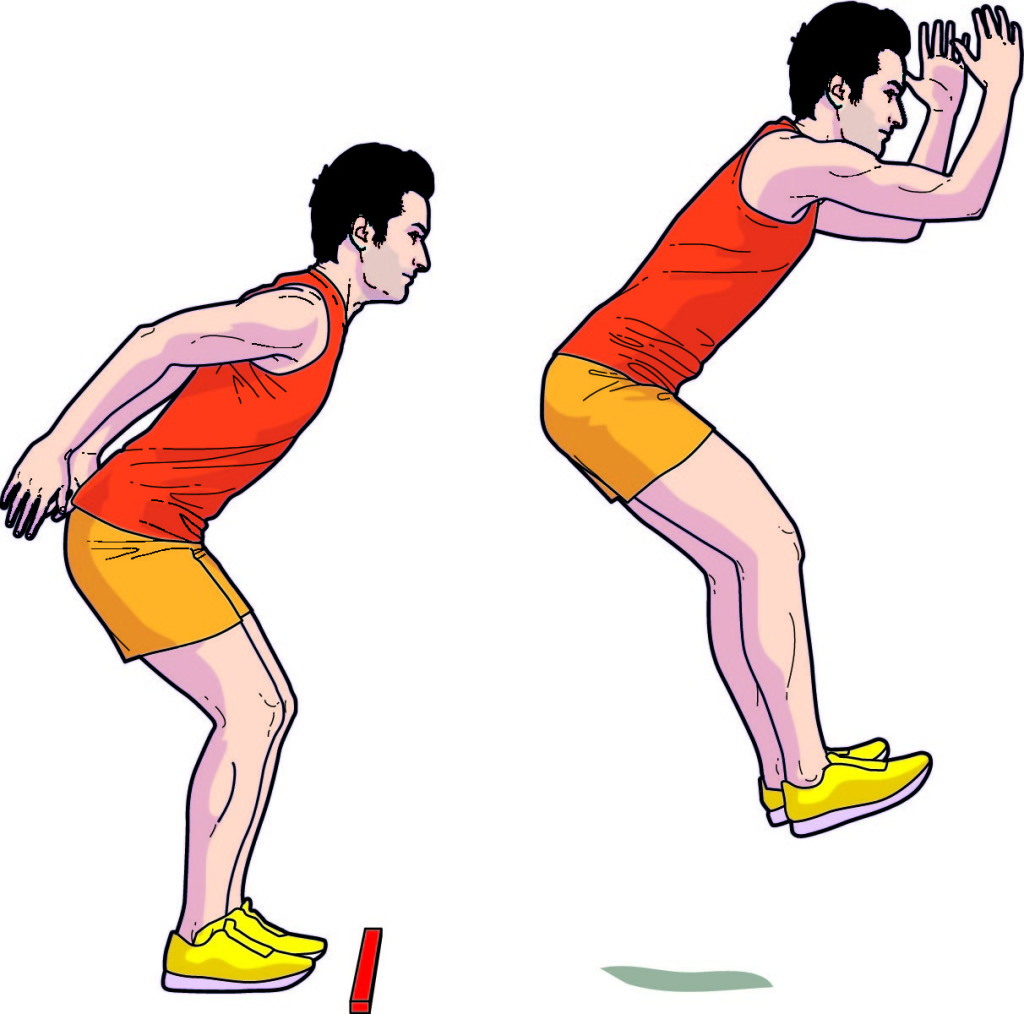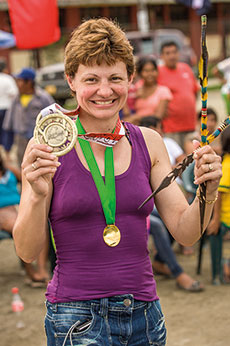Sets, reps and frequency
Perform the eight exercises as a circuit. Aim to do each exercise for one minute with 20 seconds rest in between. After completing the circuit rest two minutes before completing it again. Repeat the circuit two to three times.
1. Spiderman crawl
Areas trained: core, shoulders, arms, legs (transversus abdominus, deltoids, biceps, triceps, quadriceps, hamstrings)
Why do it?
Most obstacle races will have some sort of low-level obstacle which requires crawling under. Crawling can be hard work, so practicing will make your event more enjoyable.
Technique:
- Lie on your stomach
- Place your forearms on the ground with your elbows underneath your shoulders
- Lift up into a plank position
- Move your knee forwards towards your right elbow
- Shift your weight forward while staying very close to the ground
- Repeat on the left side
Safety tip:
If you don’t have enough space to crawl in one direction for one minute, simply change direction.
2. Balancing walk
Areas trained: core muscles (transversus abdominus, erector spinae)
Why do it?
Practice makes perfect! The more you practice your balance the easier you’ll find the balancing obstacles.
Technique:
- Take a one-inch piece of wood and lay it down on the floor
- Stand on the piece of wood with your feet turned out
- Walk forward from one end to the other end
- Keep your core tight
- Look forward and use your arms for balance
Safety tip:
Keep it on the floor to prevent twisting your ankles when you fall off.
3. Burpees
Areas trained: arms, shoulders, core and cardiovascular fitness (biceps, triceps, pectorals, deltoids, transversus abdominus, erector spinae)
Why do it?
This is a great exercise to build strength and endurance.
Technique:
- Stand with your feet shoulder-width apart
- Place your hands on the floor in front of your feet
- Jump backwards with only your legs
- Perform a press up (optional)
- Jump forwards with your legs
- Jump up into the air
- Repeat the move as fast as possible
Safety tip:
Make sure that your back doesn’t arch while in the press up position.
4. Medicine ball squat jumps
Areas trained: shoulders, legs (deltoids, quadriceps, hamstrings)
Why do it?
It will improve your explosive power to get over any wall or high obstacle.
Technique:
- Stand with your feet shoulder-width apart and hold a medicine ball in your hands
- Bend your knees until the medicine ball touches the floor
- Jump up and lift the medicine ball over your head
- Upon landing let the medicine ball touch the floor and repeat the move
Safety tip:
Focus on an object in front of you to prevent getting dizzy.
5. Distance jump
Muscles: core, legs (transversus abdominus, quadriceps, hamstrings)
Why do it?
This will help you to get over any water or fire obstacle.
Technique:
- Stand with your feet behind a marker
- Bend your knees and swing your arms backwards
- Jump as far forward as possible
Safety tip:
Keep your knees soft upon landing.
6. Pike press-up
Areas trained: shoulders, arms (deltoids, biceps and triceps)
Why do it?
Monkey bars! The one obstacle people always struggle on. This exercise will help strengthen your muscles to give you a fighting chance.
Technique:
- Kneel on the floor and place your hands shoulder-width apart on the floor
- Lift your bottom up to form a pike position
- Bend your elbows and lower your head towards the floor
- Slowly straighten your arms
Safety tip:
The stronger you get the more you’ll be able to bend your elbows.

